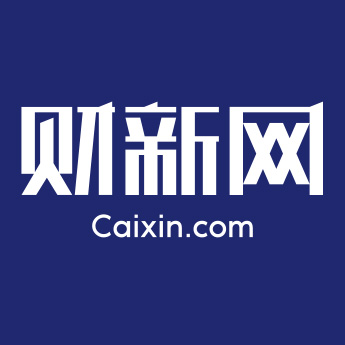阅读:0
听报道
推文人 | 许坤 许文立
原文信息
Paul De Grauwe, Yuemei Ji 01 November 2017
内容提要
DSGE模型仍然占据主流宏观经济学的主导地位,但是它们仅仅只把经济周期波动解释为外生冲击的结果。本专栏用行为经济学的概念来发展具有内生经济周期波动的宏观经济模型。这类模型强调如何在产出和通胀之间作出取舍,而模型的应用被经济的灵活性所中和。这类模型进一步帮助解释了国际经济周期波动的传播。
行为经济学越来越被当作一种合理的思考经济问题的方式。今年诺贝尔经济学奖授予理查德.塞勒证明经济学领域已经开始将视角偏离“经济人”的范式。
然后,在主流宏观经济学中却很有有这样的情况。经济人继续统治着DSGE模型的霸权。在这些模型中,个体利用基于所有内嵌于模型中可用的信息来作出理性预测,并最大化无限期效用函数。这些模型也不会出什么问题,居住于模型中的代理人作出最优化决策,而且被赋予了极大的认知能力来理解这个复杂的世界。仅仅只有外生扰动才会使得这些代理人偏离最优,并迫使他们再次最优化。因此,这些模型就把经济周期波动的发生作为外生事件(冲击)的结果,这些外生冲击迫使个体再次考虑他们的最优化决策。这种模型不会产生内生经济周期波动。繁荣与萧条都是外生扰动的结果(Smets and Wouters,2007;Gali,2008)。
“行为”宏观经济模型
我们需要做得更好,虽然我们已经在一系列出版物中尝试做很多(De Grauwe 2012, De Grauwe and Corrado 2015, De Grauwe and Ji 2016, 2017a)。当然,在探索宏观经济建模的不同轨迹方面,我们并不孤单。越来越多的研究者开始构建“基于代理人”模型和“行为”宏观经济模型(Alfarano et al. 2005, Tesfatsion and Judd 2006, Colander et al. 2008, Farmer 2006, Farmer and Foley 2009, Gatti et al. 2011, Gabaix 2014, Westerhoff and Franke 2012, Hommes 2016, Hommes and Lustenhouwer 2016, Muellbauer 2017; 也可参见Blanchard 2017 和Gürkaynak and Tille 2017)。
有许多方向来偏离主流宏观经济模型。我们所选择的方向是假设代理人有认知能力限制,从而阻碍了他们拥有理性预期。相反,这些代理人用简单的预测规则(启发式),并在事后,评价这些规则的预测效果。这种评价促使代理人转向最佳预测规则。可以想象,在一个无人能完全理解的极度复杂的世界中,这样的适应性学习可能就是处理复杂性的理性方式(Simon 1957, Gigerenzer and Selten 2002, Ackerlof and Shiller 2009)。
在标准NK模型中引入适应性学习假设产生内生的乐观和悲观波动(动物精神),这是驱动经济周期自我实现的方式。这也导致一种双向因果关系。即乐观(悲观)导致产出上升(下降),产出上升(下降)加剧乐观(悲观)情绪(De Grauwe 2012, De Grauwe and Ji 2017a)。
动物精神的波动的一个重要特征是产出缺口的波动被那些反映繁荣和萧条强烈波动,以一种不可预测的方式交替出现的时期所刻画。技术上来讲,这意味着产出缺口的分布和产出增长不是高斯分布,且展示出厚尾特征。
现在,已经有重要证据显示出OECD国家的产出缺口(和产出增长)并不是高斯分布,而具有过度峰度和厚尾。Fagiolo et al. (2008)和Fagiolo et al. (2009)进行了一些重要的计量经济分析来说明产出缺口和GDP增长率的分布并非正态性。因此,我们的行为模型预测,在现实世界中,产出缺口并不服从正态分布,而是被过度峰度和厚尾所刻画。产出缺口的高阶矩的这些特征由行为模型内生产生。它并不是随机冲击袭击经济所产生的结果。
与标准DSGE模型对比很重要。DSGE模型很难解释产出缺口的厚尾特性。它们不得不依赖于大的外生冲击来解释经济周期的繁荣与萧条特征。不过,这种解释并不令人满意,因为它把解释经济周期的重任丢给了外部力量。一个很好的例子就是最近几年将进入部门整合进DSGE模型中来解释经济周期的努力。然而,这些模型的结果依赖于冲击是序列相关的假设。因此,人们认为DSGE模型不能产生一个内生经济周期理论。
我们用行为宏观经济模型研究了工业化国家经济周期的高度同步性问题。假设拥有共同外生冲击的标准宏观经济模型很难解释这些现象。我们扩展行为模型到两国环境,并发现该模型能产生很强的动物精神国际传播效应,进而导致了强烈的经济周期关系(De Grauwe and Ji 2016)。这很接近于现实观测。
在我们最近的一篇论文中,我们用上述行为模型分析了结构性改革如何影响经济周期的本质,以及央行稳定产出和通胀的能力(De Grauwe and Ji 2017b)。我们通过两条渠道将结构改革引入行为模型中:一是通过NKPC(供给方程)中通胀对产出缺口的敏感度;二是通过供给方程的变化,即是标准DSGE模型中建模结构改革的方式(Eggertson et al. 2014, Cacciatore et al. 2012, Everaert and Schule 2006, Gomes et al. 2013, ECB 2015)。在这些模型中,劳动力市场的结构改革包括放开工作保护,失业保险削减等等;产品市场的结构改革包括新企业进入壁垒的消除。这些改革都会降低产品和劳动市场中的markups,并把经济带向更接近于完全竞争。因此,这些改革能被视作供给曲线右移,增加潜在产出。
我们发现提升工资和价格灵活性的结构改革对经济周期动态产生深远影响。尤其是,在一个更加灵活的经济中,动物精神的作用被削弱。
参考文献:
1.Akerlof, G and R Shiller (2009) Animal spirits: How human psychology drives the economy and why it matters for global capitalism, Princeton University Press.
2.Alfarano, S, T Lux and F Wagner (2005), “Estimation of agent-based models: The case of an asymmetric herding model”, Computational Economics 26: 19–49.
3.Blanchard, O (2017) “Do DSGE models have a future?” in R Gürkaynak and C Tille (eds), DSGE Models in the Conduct of Policy: Use as Intended, VoxEU ebook.
4.Cacciatore, M, R Duval and G Fiori (2012) “Short-term gain or pain? A DSGE model-based analysis of the short-term effects of structural reforms in labour and product markets”, OECD, Economics Department Working paper no 948.
5.Colander, D, P Howitt, A Kirman, A Leijonhufvud and P Mehrling (2008), "Beyond DSGE models: Toward an empirically based macroeconomics", American Economic Review 98(2): 236-40.
Grauwe, P (2012) Lectures on Behavioural Macroeconomics, Princeton University Press.
Grauwe, P and C Macchiarelli (2015) “Animal spirits and credit cycles”, Journal of Economic Dynamics and Control 59: 95-117.
Grauwe, P and Y Ji (2016), “International correlation of business cycles in a behavioural macroeconomic model”, CEPR, Discussion Paper, April.
Grauwe, P and Y Ji (2017a) “Inflation targets and the zero lower bound in a behavioural macroeconomic model", Economica, forthcoming.
Grauwe, P and Y Ji (2017b), “Structural reforms and monetary policies in a behavioural macroeconomic model", CEPR, Discussion Paper no 12336.
11.Delli Gatti, D, C Di Guilmi, E Gaffeo, G Giuloni, M Gallegati and A Palestrini (2005), “A new approach to business fluctuations: Heterogeneous interacting agents, scaling laws and financial fragility”,Journal of Economic Behavior and Organization 56: 489-512.
12.Eggertsson, G, A Ferrero and A Raffo (2014), "Can structural reforms help Europe?" Journal of Monetary Economics 61: 2-22.
13.Evans, G and S Honkapohja (2001), Learning and Expectations in Macroeconomics, Princeton University Press.
14.Farmer, R E A (2006), “Animal Spirits”, Palgrave Dictionary of Economics.
15.Farmer, R, J Doyne and D Foley (2009), “The economy needs agent-based modelling”, Nature 460: 685-686
16.Gabaix, X (2014), “A sparsity-based model of bounded rationality”, The Quarterly Journal of Economics, 1661–1710.
í, J (2008), Monetary policy, inflation and the business cycle, Princeton University Press.
18.Gigerenzer, G and R Selten (2002), Bounded rationality, Cambridge: MIT Press.
19.Gürkaynak, R and C Tille (2017), “DSGE models in the conduct of policy: Use as Intended”, VoxEU.
20.Hommes, C (2016), “Behavioural macroeconomics with heterogeneous expectations and interacting agents”, Discussion Paper, CenDEF, University of Amsterdam.
21.Hommes, C and J Lustenhouwer (2016), “Managing heterogeneous and unanchored expectations: A monetary policy analysis”, Working Paper, Tinbergen Institute, Rotterdam.
22.Muellbauer, J (2016), “Macroeconomics and consumption”, CEPR Discussion paper 11588; Oxford University, Department of Economics working paper 811.
23.Simon, H (1957), "A behavioural model of rational choice", in Models of Man, Social and Rational: Mathematical Essays on Rational Human Behavior in a Social Setting, New York: Wiley.
24.Smets, F and R Wouters (2007), “Shocks and frictions in US business cycles: A Bayesian DSGE approach”, American Economic Review 97(3): 586–606.
25.Tesfatsion, L and K L Judd (2006), Handbook of Computational Economics Volume 2: Agent-Based Computational Economics, Elsevier.
26.Westerhoff, F and R Franke (2012), “Agent-based models for economic policy design: Two illustrative examples”, Iowa State University, Working Paper No 88.
推文人简介:
许坤,中国人民大学公共管理学院,
许文立,安徽大学经济学院,
版权归原作者和voxeu,本译文只用作学术交流。

话题:
0
推荐
财新博客版权声明:财新博客所发布文章及图片之版权属博主本人及/或相关权利人所有,未经博主及/或相关权利人单独授权,任何网站、平面媒体不得予以转载。财新网对相关媒体的网站信息内容转载授权并不包括财新博客的文章及图片。博客文章均为作者个人观点,不代表财新网的立场和观点。




 京公网安备 11010502034662号
京公网安备 11010502034662号 